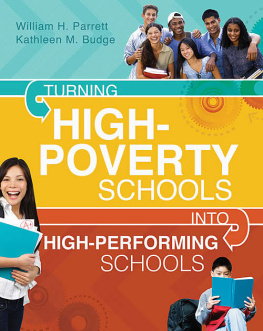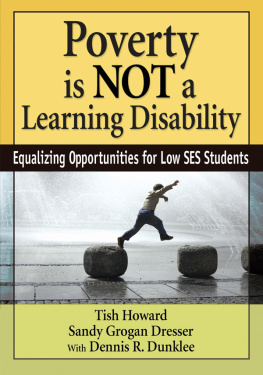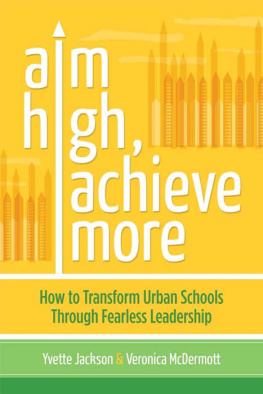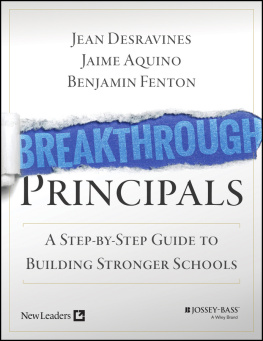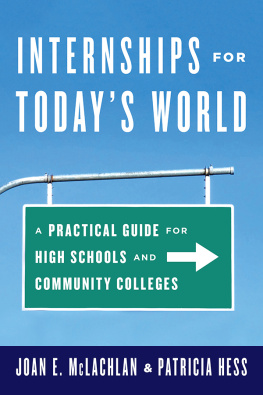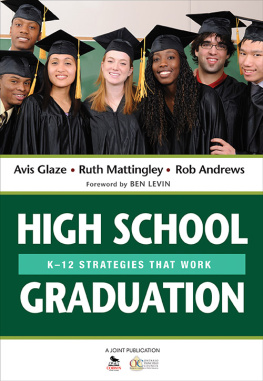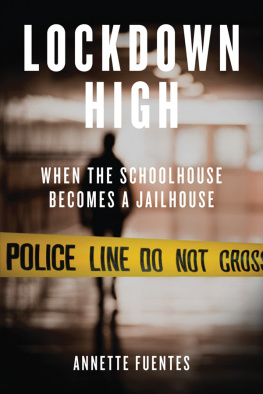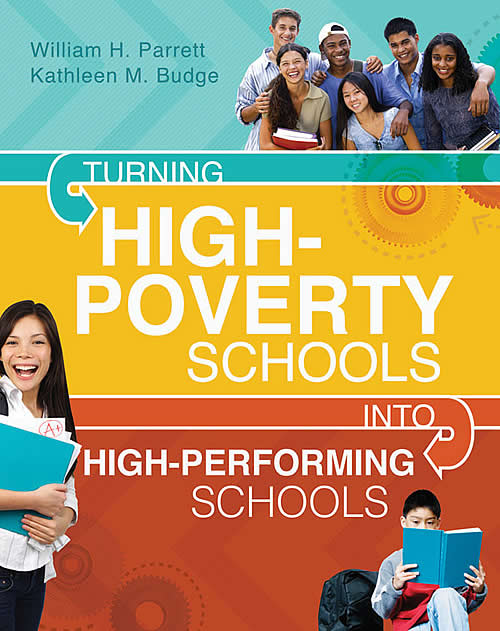Dedication
To our children: Mia, Jonathan, Katrina, Nathaniel, and Ashley; and our parents: Carey, Jan, Oscar, and Carlene.
We love you.
Foreword
Early in my career as a school administrator, I was standing in front of the faculty in an after-school staff meeting to present data about the achievement of our students. I was working the room to engender a dialogue about what we were going to do about the gaps in the numbers. The numbers, frankly, suggested we weren't serving many of our students very well. This was the late 1980s and the education field was embarking on the era of standards, just postNation at Risk, and beginning to incorporate data on student performance in conversations about improvement. Our school, while facing circumstances nowhere near as difficult as many of the schools chronicled in this volume, worked with a student population that was among the poorest and most racially and linguistically diverse in our small city district.
As I stood at the overhead projector and began to present the data on student achievement, some hands started to go up in the back of the meeting room. The questions went something like this (and I'm paraphrasing to condense the commentary): "I know many of our kids struggle, but they come to school way behind other kids. How can you expect us to teach those kids to the same level as kids who have two parents, get breakfast every morning, and have adequate support to get their homework done every night? We just can't do it all!" While I'm sparing you a lengthier diatribe, this was the tenor of many comments from a concentrated group of faculty members. This group, despite stating mainly good intentions for trying to do the right thing for our students, just couldn't get past the difficult circumstances and learning needs our kids brought with them to school every day. Unfortunately, despite my efforts, the conversation deteriorated into blaming the kids and their circumstances instead of talking about owning the problems that we saw in our data and engaging in efforts to shift practice that could be powerful for the kids. Looking back, it was a failure of my early leadership for sure, but the episode was an example of how our beliefs about what is possible for children's learning hamper our efforts to teach all kids.
The confused wisdom of some (not all, let me emphasize) of my educational elders in the room that day, regrettably, was that what we needed to be most effective in ensuring adequate learning growth in our students was better students. By "better students," this group was implying that we needed kids raised in more affluent socioeconomic circumstances; kids from two-parent, traditional, nuclear families, who benefited from a "Leave It to Beaver" home environment where dad was the breadwinner and mom stayed home to tend the children. The idea was that we needed kids with many of the privileges afforded to those called the "haves" and fewer of those kids who hailed from families who are characterized as "have-nots." Latent in the dialogue among a few (again I emphasize) of our mostly white, mostly middle-class teachers was that we would do a lot better if we only had fewer of "those" minority kids, many from immigrant families from Southeast Asia who came to school without English as a first or second language and who had begun populating the apartment complexes in our immediate neighborhood. And if those few teachers could just have the pleasure of teaching a batch of kids from better circumstances, who looked and talked more like they did, by golly, they'd do a heck of a job of educating them.
I want to believe that the profession has traveled far from that late 1980s faculty meeting conversation. Certainly, the book you are about to read is predicated on an argument that absolutely and completely refutes the claims I heard from some of my faculty that day. Building on long-standing work done by organizations like the Education Trust and scholars studying how schools manage to teach virtually all children well, what Bill Parrett and Kathleen Budge have rendered is an analysis and an accompanying tool kit for understanding how schools all over the United States manage to realize outstanding student achievement results among high-poverty, high-minority populations.
What this volume reinforces for the field are foundational ideas that compose a sort of recipe for success in serving all children's learning needs. The argument goes something like this: (1) experience from the high-poverty, high-performing (HP/HP) schools that Bill and Kathleen chronicle tells us that all children can learn at high levels, regardless of their race, socioeconomic background, language, family situation, or (pick your descriptor); (2) for children from a diverse spectrum to learn at high levels, they need to be taught by people in schools who believe they can learn, who approach teaching with the idea that students will learn if taught well, and who take seriously an ongoing effort to improve their practice in line with best thinking and examples in the field; and finally, (3) for teaching of this kind to be realized across a whole school (or system), leadership at the school and district needs to be squarely focused on supporting the improvement of teaching in an ongoing, routine way.
A simple recipe, but complex to implement, yet powerfully rendered here. Much of my work in education has been dedicated to teaching and to the research that supports ways to make these simple ideas come to life in practice. Bill and Kathleen synthesize learning from research and practice that specifically highlights the moves that leaders take in schools and systems that have realized significant growth in learning for all kids, regardless of their race, language, or socioeconomic status.
I wish I had this book in my hands to give to my faculty that day back in the late 1980s. For all educators and practitioners reading these ideas now, take them to heart and put them into practice.
Michael Copland
Associate Professor and Chair of Educational Leadership and Policy Studies, College of Education, University of Washington
Introduction
We Must Keep Asking the Questions
The work of improving schools is about thinking and asking questions.
Andres Alonso, chief executive officer, Baltimore City Public Schools
***
As a nation, are we content that 70 percent of our entering 9th graders read below grade level? Is it acceptable that one out of every three minority students attends a high school where 40 percent of the students drop out? Are we willing to continue spending $2.6 billion a year replacing teachers, half of whom choose to leave the profession before they begin their sixth year in a classroom? Can we excuse the fact that kids are twice as likely to be assigned to inexperienced or uncertified teachers in schools with large enrollments of poor and minority students? As a country and as a profession, we have not systematically asked these questions, let alone answered them. The Alliance for Excellent Education (2010) and many others would say public education is in crisis, and we agree.
Overcoming the Crisis
Yet our crisis is one that is being successfully countered in hundreds of public schools across the United States. These schools enroll high proportions of underachieving children and adolescents who live in poverty but have reversed long-standing traditions of low achievement and high dropout rates. They are "models of the possible," where the mind-set of "it's impossible" has been proven wrong. They provide blueprints for improvement from which other high-poverty schools can learn. More important, these schools are places where students who live in poverty experience success, which leads to optimism, hope, and self-efficacy. In these schools, the crisis

